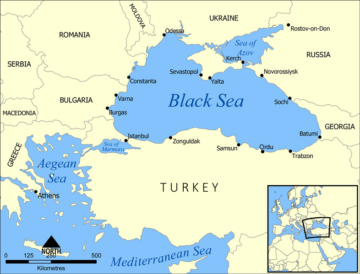Last month it was Suez, this month it’s Istanbul. Suddenly, canals are all the rage.
This week, Reuters reported how six Turkish banks, having signed up to the UN – backed Principles for Responsible Banking framework, expressed a distinct lack of enthusiasm for backing the 75 billion Lira ($13 billion) Kanal Istanbul which President Erdogan intends to kickstart in June. That this was news was itself news.
The banks cited the environmental risks (impact on a third of the city’s fresh water supply, earthquakes and more) and the huge cost (likely to only increase anyway), both valid I am sure. But what about the revenue risk?
The canal would effectively act as a 45 km bypass for the congested Bosphorous Strait. The strait is certainly congested. According to the long – established Anadolou Agency (Logie Group is nothing if not eclectic in its sources), 41,000 ships passed through the Bosphorous in 2019 making its traffic three times more dense than that in the Suez Canal and four times that in the Panama Canal. (43,000 vessels used Turkey’s other strait, Canakkale, at the other end of the Sea of Marmara). For the boosters of the new canal to forecast 160 vessels per day / 58,000 vessels per year even allowing for future growth and even if Turkey were to charge for the Bosphorous which it currently doesn’t, this looks wildly ambitious. Not even Eurotunnel dared to assume that level of traffic migration from ferries to the Channel Tunnel.
Further, expecting users to pay so as to avoid congestion on toll – free assets makes for a much more problematic risk profile. One rare example is the Midland Expressway a.k.a. the Birmingham Northern Relief Road which charges vehicles to bypass the toll – free M6 motorway in the UK. Opened in 2003, it failed to meet projections from the outset and was sold to its creditors in 2017. It is still the only major toll road in the UK.

Chinese contractors have been lining up to build the canal. Of course, they have – so long as someone pays them to do so. Indeed, the canal was included in a $65 billion infrastructure proposal from China in 2018 but since then, Beijing has reined in its appetite for the wilder excesses of its Belt & Road Initiative and Sinosure, which in the past has been stuck with the uncommercial risk, can these days be expected to demur.
Similar doubts surround plans to dig a canal across the Kra isthmus in Thailand so as to shave a bit off the time spent otherwise sailing around Singapore. The Sunda Straits bridge between Sumatra and Java was equally implausible despite / because of offering close – up views of Krakatoa (not so directly comparable but too good to omit).
Infrastructure projects can be transformational in generating significant benefits not just for themselves but also externally i.e. beyond the asset itself, whether it is in the form of developing nearby real estate or enhancing traffic flows further afield. It is the host government’s fiendishly difficult role – Logie Group stands ready to assist – to judge these benefits when appraising how much it / the private sector should spend in the first place. But, at some point, the government needs to conclude that the money can be better spent elsewhere.
The Istanbul canal is not so much a white elephant (or a black swan from Suez) as … a turkey, if you will. Back in 2011, the President called the canal a “crazy project”. I fear that he was right.







